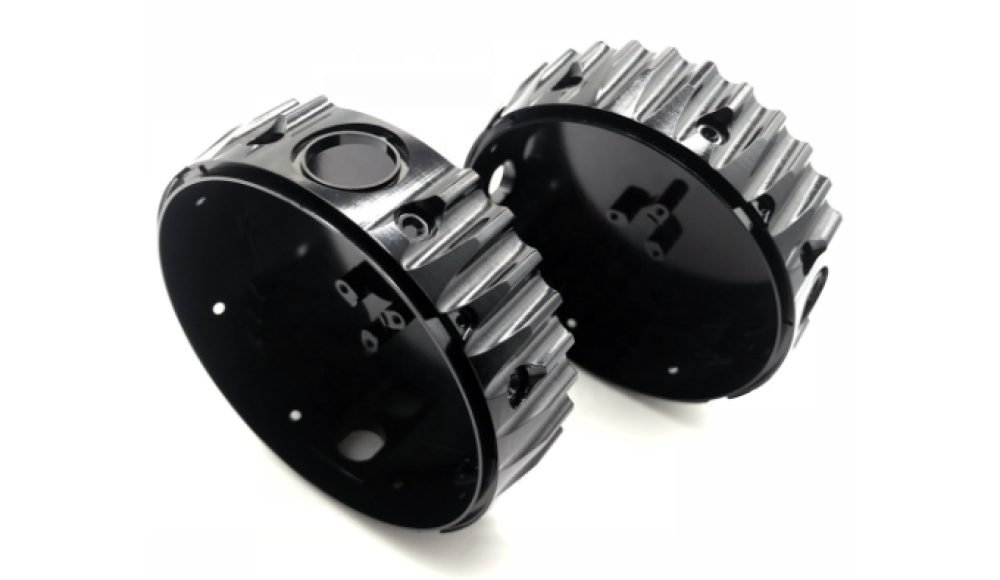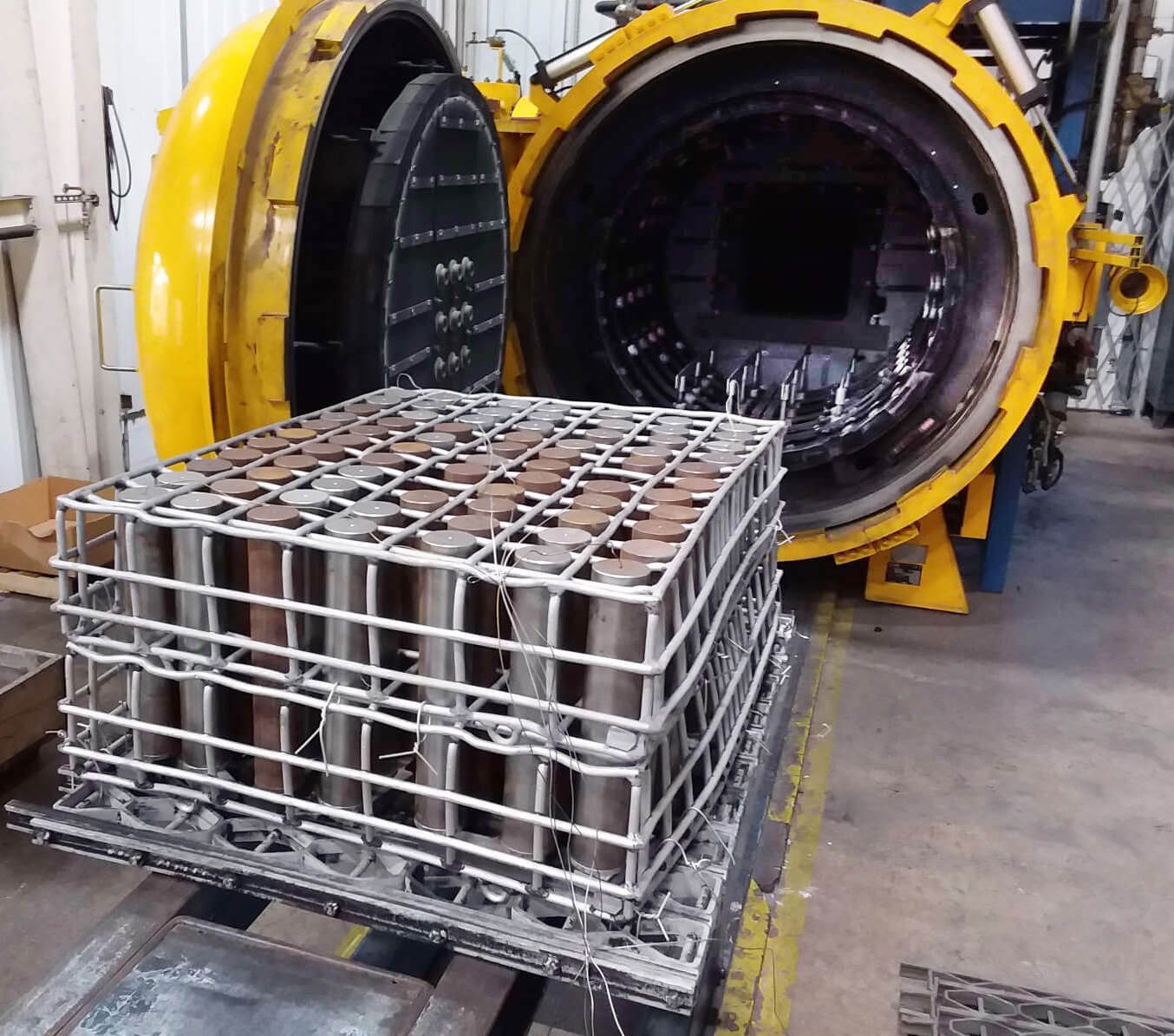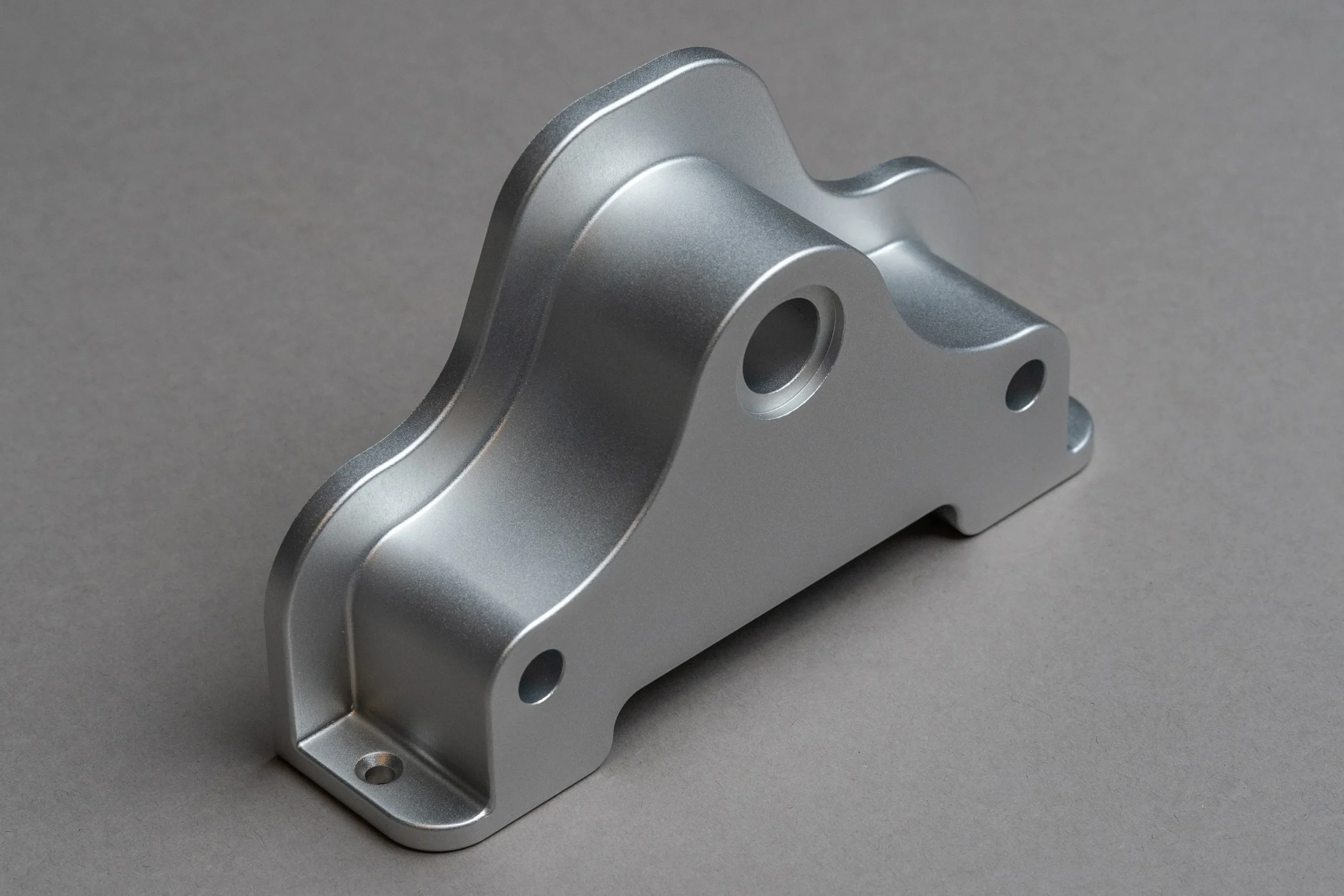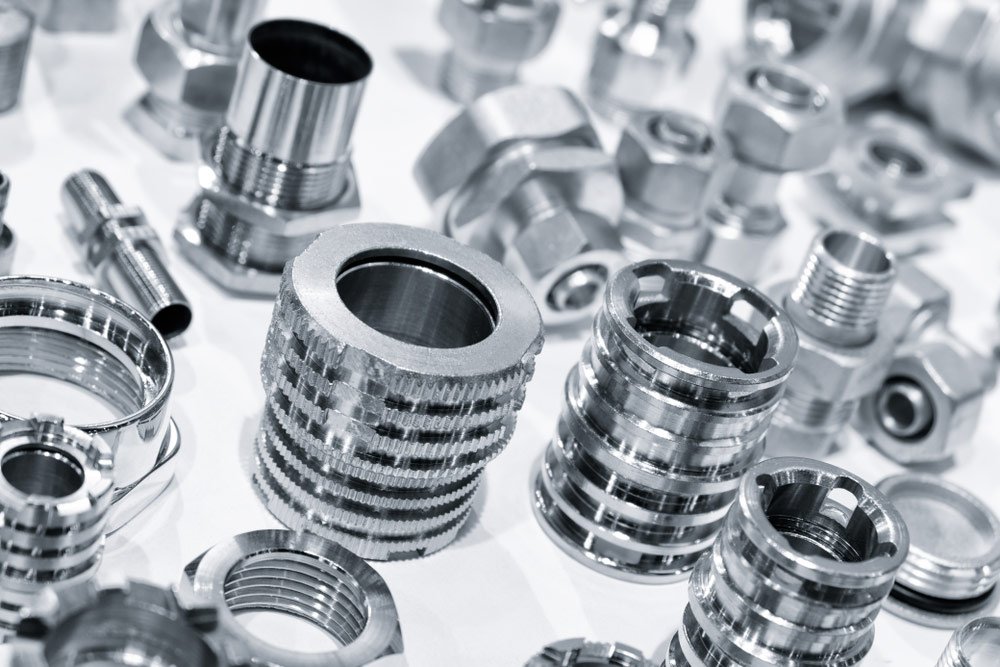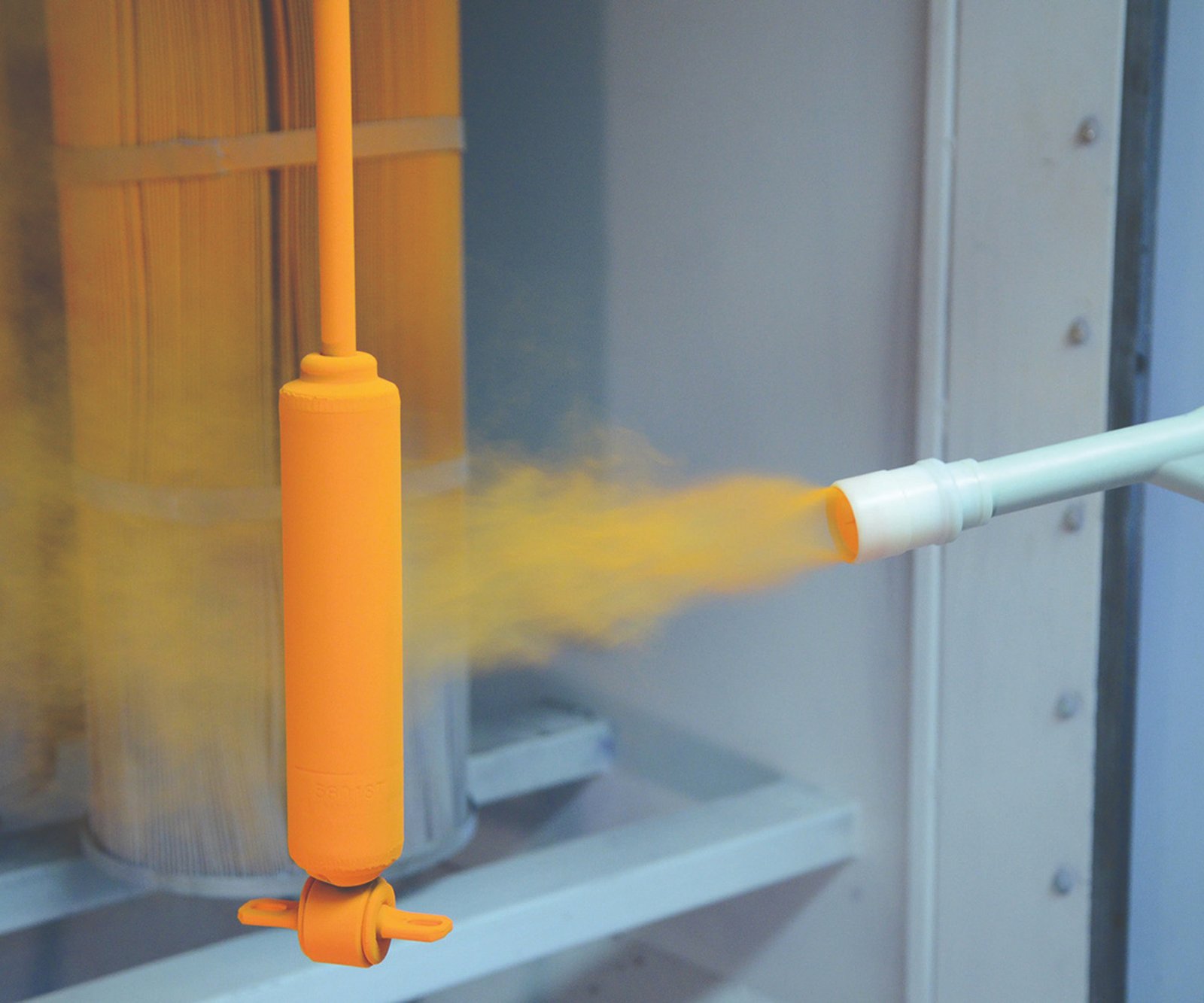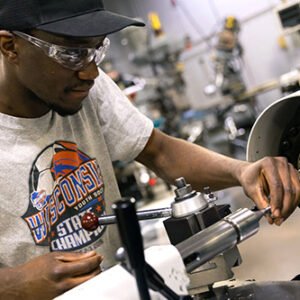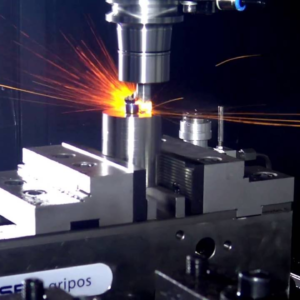When a CNC machined part first comes out of the machine, it’s raw, rugged, and…well, a little rough around the edges—literally. You’ll often find visible tool marks, Burrs, and sharp edges that don’t just make the part look unrefined, but also compromise its functionality and safety. That’s where surface finishing steps in as the unsung hero.
Surface finishing isn’t just about making a part look pretty. It’s a crucial post-processing step that enhances a component’s durability, resistenza alla corrosione, and even its dimensional accuracy. Whether you’re building components for aerospace, settore automobilistico, elettronica, o applicazioni mediche, surface finishing takes your part from functional to flawless.
Think of it like a final polish on a diamond. The stone might already be cut perfectly, but it’s the polish that brings out the brilliance. Allo stesso modo, CNC parts benefit tremendously from that extra level of post-machining care.
Basics of CNC Machining and Post-Processing
CNC machining is famous for its high precision and repeatability. But while the milling or turning operations can create accurate shapes and tight tolerances, they also leave behind tiny imperfections—microscopic peaks and valleys on the part’s surface. Tool wear, velocità del mandrino, and material properties all affect the final output.
That’s why post-processing becomes a necessary phase in most machining projects. Once the part is machined, it goes through finishing operations that improve both function and form.
Here are a few common surface issues CNC machining can leave behind:
Burrs: Sharp, protruding material edges that need deburring.
Tool marks: Tiny grooves from cutting tools.
Rough finishes: Inconsistent textures that affect assembly or wear resistance.
If you ignore these, your parts might not fit together as intended or may corrode prematurely. But with the right finish, you eliminate these issues and enhance the lifespan and performance of your component.
Overview of Heat Treatment Processes
Heat treatment is a thermal process applied to metals to alter their mechanical properties—think hardness, tenacità, e duttilità. These changes are achieved by carefully controlling temperature, heating duration, and cooling rates.
Let’s break down the key methods:
Ricottura
Annealing is all about softening a material. It involves heating the metal to a specific temperature and then cooling it slowly, usually in a furnace. The goal is to reduce hardness and increase ductility. That makes the material easier to work with during cold forming processes like bending or stamping.
Commonly annealed metals:
It also helps in relieving internal stresses, improving electrical conductivity, and enhancing machinability. So if your part needs to undergo further machining or forming, annealing might be the right starting point.
Temperamento
Tempering follows hardening and is used to reduce brittleness. The metal is heated below its critical temperature and held there to relieve stresses while maintaining a decent level of hardness.
Temperatures and outcomes:
Low temps (150–250°C): Retains most hardness but reduces brittleness
High temps (400–600°C): Increases ductility and toughness, but lowers hardness
It’s widely used in tooling, settore automobilistico, and aerospace industries where balanced mechanical properties are crucial.
Case Hardening
Also known as surface hardening, this method only hardens the outer layer of the material while keeping the core soft. Carbon or nitrogen is introduced to the surface at high temperatures, creating a hard shell.
Ideal for parts that:
Require high wear resistance on the surface
Need a tough inner core to absorb shocks
Think gears, alberi a camme, and other high-load parts.
Through Hardening
Unlike case hardening, through hardening ensures uniform hardness throughout the material. This is done by heating the metal and rapidly cooling (tempra) it in water, brine, or oil.
Great for parts subjected to:
Constant stress
High impact
Long-term wear
Steel alloys are the most common candidates here.
Understanding Surface Roughness in CNC Machining
Surface roughness refers to the tiny, microscopic deviations on a machined surface. Even a part that looks smooth to the naked eye has peaks and valleys that can impact its performance in the real world.
Why does surface roughness matter?
Affects how parts fit together
Influences wear and friction
Plays a role in sealing and bonding
Impacts aesthetic appearance
Surface roughness is measured in RA (Roughness Average), a unit that defines the average height of the peaks and valleys. Nella lavorazione CNC, Ra values typically range from 0.4 µm (very smooth) A 6.3 µm (rough finish).
Most industries have surface finish standards, and choosing the right one can make or break your project. Per esempio, high-precision aerospace parts might demand a super smooth finish of Ra 0.8 µm or less.
Continuing with the article from where we left off (Fare un passo 2: Headings 6–10):
Surface Finish Options for CNC Machining
When you’ve got your CNC part freshly machined, you’re left with two choices: leave it “as-machined” with visible tool marks and surface inconsistencies—or take it to the next level with a surface finish that boosts both its form and function. The good news? You’ve got plenty of finishing options, each offering its own aesthetic appeal and mechanical benefit.
Let’s break down the most popular surface finishes used in CNC machining:
Sabbiatura delle perle
Bead blasting is like a deep exfoliation session for your metal parts. It involves bombarding the surface with tiny beads (usually glass or ceramic) under high pressure, resulting in a clean, uniforme, finitura opaca.
Why it’s a go-to option:
Removes surface impurities and tool marks
Produces a smooth, satin-like texture
Prepares the part for painting, dyeing, or anodising
Ideale per:
Alluminio, acciaio inossidabile, rame, and brass parts
Components needing a refined appearance with a non-reflective surface
Tuttavia, bead blasting doesn’t change the part’s dimensions significantly, which makes it an excellent finishing method when tolerances matter. Just keep in mind, it’s best for medium to large parts—smaller components can be tricky to handle during the process.
Elettropolishing
Electropolishing is the high-tech cousin of bead blasting. Instead of physically abrading the surface, this process uses an electrochemical reaction to remove a thin layer of metal. This smooths out surface peaks, leaving behind a bright, lucido, and ultra-clean finish.
What makes it special?
Reduces surface roughness significantly
Improves corrosion resistance
Ideal for medical, food-grade, and cleanroom applications
Materials that benefit most:
Acciaio inossidabile (particolarmente 300 E 400 serie)
It’s also known for enhancing weldability and making the part easier to sterilize. If you’re building parts for pharmaceuticals or surgical tools, electropolishing might be your best friend.
Nichelatura chimica
Unlike electroplating, electroless nickel plating doesn’t need electricity to do its job. Invece, a chemical solution coats the part with a uniform layer of nickel-phosphorus alloy. That makes it ideal for parts with complex geometries or areas hard to reach with a typical electrical process.
Benefits include:
Eccellente resistenza alla corrosione
Uniform coating thickness, even on threads and recesses
Improved hardness and surface appearance
Common use cases:
Aerospaziale, settore automobilistico, and electronic enclosures
The final finish depends on the phosphorus content—low phosphorus for wear resistance, high phosphorus for corrosion protection.
Verniciatura a polvere
If you’re looking for vibrant colors and durability, powder coating delivers both. It’s a dry finishing process where powder particles (made of thermoplastic or thermoset polymers) are electrostatically charged and sprayed onto the part’s surface. Poi, the part is cured in an oven, forming a smooth and hard layer.
Why it’s loved:
Highly durable and resistant to wear
Available in a wide range of colors and textures
Better for the environment than liquid paint (no VOCs)
Meglio per:
Aluminium and steel parts
Consumer products and enclosures
Powder coating isn’t just about looks—it adds a tough layer that resists corrosion, graffi, and UV damage.
Anodising
Anodising is the surface finish of choice for aluminium parts when corrosion resistance and a splash of color are needed. It’s an electrochemical process that thickens the natural oxide layer on the surface of the metal.
Come funziona:
The aluminium part is submerged in an acid electrolyte bath
An electric current is applied, causing oxygen ions to bond with aluminium atoms
A porous oxide layer forms, which can then be dyed in various colors
Perks of anodising:
Eccellente resistenza alla corrosione
Enhanced surface hardness
Di lunga durata, UV-resistant color options
There are different types of anodising too:
Tipo I (acido cromico): Thin layer, mostly for aerospace
Tipo II (acido solforico): Standard for general use
Tipo III (hard anodising): Thick layer for extreme durability
If your part needs to look good and last long, anodising is a stellar pick.
Choosing the Right Surface Finish for Your Application
COSÌ, how do you pick the perfect surface finish from this smorgasbord of options? It all depends on what your part is meant to do, what it’s made of, and what kind of environment it’ll live in.
Here are some key decision-making criteria:
Based on Functionality
Start by asking: what role will this part play?
Moving parts: Go for low-friction finishes like electropolishing or nickel plating.
Outdoor or corrosive environments: Choose anodising, passivation, or galvanising.
Medical or food-grade applications: Electropolishing or passivation ensure cleanliness and hygiene.
Resistenza all'usura: Case hardening or powder coating offers durability.
Based on Material Type
Not all finishes play well with all materials. Ecco una guida veloce:
| Materiale | Recommended Finishes |
| Alluminio | Anodising, Verniciatura a polvere, Sabbiatura delle perle |
| Acciaio inossidabile | Passivazione, Elettropolishing, Sabbiatura delle perle |
| Steel Alloys | Zinc Coating, Nickel Plating, Verniciatura a polvere |
| Rame & Ottone | Sabbiatura delle perle, Elettropolishing |
Based on Budget and Lead Time
Some finishes are fast and budget-friendly (like bead blasting), while others require more time and setup (like anodising or powder coating). Think about your production timeline and how much you’re willing to spend per part.
A few pointers:
Short lead time & conveniente: Basella perle, passivation
Premium aesthetics & elevata durabilità: Anodising, verniciatura a polvere
Geometrie complesse: Electroless nickel plating
CNC Surface Finishing Options at Massima precisione
At Xometry, you’re not limited to just basic finishes. They offer a full suite of finishing services integrated into their instant quoting system. You can upload your design and choose from a wide range of post-processing options—all from one place.
Full-Service Capabilities
Whether you need Tornitura CNC, Fresatura CNC, or multi-axis machining, Tops Precision provides not just the machining but also the complete post-processing treatment. You don’t have to coordinate between multiple vendors—everything from fabrication to finishing is handled in-house.
Material and Finish Combinations
Tops Precision supports all popular industrial materials:
Alluminio (6061, 7075, ecc.)
Acciaio inossidabile (304, 316)
Acciaio (Blando, Attrezzo, Lega)
Rame, Ottone, Titanio
Each material can be matched with compatible finishes during the quoting process, making it easy to get exactly what you need with full traceability and consistency.
Continuing with Step 3 (Headings 11–15 of the article):
Heat Treatment Vs. Finitura superficiale
Heat treatment and surface finishing both serve critical purposes in the CNC manufacturing process—but they are not the same, and understanding their differences helps you apply them effectively.
Key Differences and Applications
Mettiamo in chiaro una cosa: heat treatment changes the internal structure of the metal, Mentre surface finishing only affects the outermost layers.
Here’s a breakdown:
| Aspetto | Trattamento termico | Finitura superficiale |
| Scopo | Alters internal properties (durezza, duttilità) | Improves surface appearance and resistance |
| Depth of Impact | Deep—affects entire part or selected zones | Shallow—only surface-level improvements |
| When Applied | Before or after CNC machining | Mostly after CNC machining |
| Esempi | Ricottura, Temperamento, Case Hardening | Anodising, Verniciatura a polvere, Sabbiatura delle perle |
Use heat treatment when your goal is to increase the mechanical strength, reduce internal stresses, O enhance wear resistance. Use surface finishing when you need to improve corrosion resistance, achieve a specific look, O refine part tolerances.
When to Use One or Both
A volte, you might need only heat treatment, like when you’re producing a high-strength tool steel gear. Other times, surface finishing alone (like anodising aluminium enclosures) is more than enough.
But in many industrial applications—especially in aerospace, settore automobilistico, and medical devices—you’ll need both:
Heat treatment to toughen the part or relieve machining stress
Finitura superficiale to protect it from the environment or make it assembly-ready
Always consider your end-use scenario before deciding.
How Surface Finishing Affects CNC Tolerances
This is one of the most overlooked yet critical factors in CNC machining. Surface finishes can and often do impact your final part dimensions—and if you don’t account for this, you might end up with a part that’s out of spec.
Dimensional Changes Post-Finishing
Here’s the catch: most finishing processes add or remove material, even if it’s just microns.
Anodising adds a layer of 5–25 microns
Electroless nickel plating adds 2.5–100 microns
Elettropolishing removes 2–10 microns
Rivestimento in polvere adds 60–150 microns
So what does this mean for you?
If you’ve designed your part with ultra-tight tolerances (±0,01 mm), these small changes can throw off your entire assembly. This is especially true for mating components.
Best Practices to Maintain Precision
To stay on the safe side:
Always design with finishing in mind
Leave extra material allowance when necessary
Discuss your tolerances with your finishing provider (like Tops Precision)
Include post-finish dimensions in your technical drawings
By planning ahead, you can avoid the frustration of reworks and failed fits.
Surface Finish Comparison Table
Here’s a side-by-side comparison of all the major surface finishes you can apply to CNC machined parts, with their key benefits and best-fit materials.
| Finitura superficiale | Materiali | Benefici |
| Ricottura | Acciaio, Rame, Alluminio, Ottone | Increases ductility, reduces hardness, relieves stress |
| Temperamento | Steel Alloys | Increases toughness, reduces brittleness |
| Case Hardening | Acciaio, Alluminio | Hardened outer layer, soft core for shock absorption |
| Through Hardening | Steel Alloys | Uniform hardness throughout |
| Sabbiatura delle perle | Alluminio, Acciaio, Ottone, Rame | Smooth matte finish, removes imperfections |
| Elettropolishing | Acciaio inossidabile | Luminoso, liscio, finitura pulita; reduces surface roughness |
| Nichelatura chimica | Alluminio, Steel Alloys | Anche il rivestimento, corrosion protection, resistenza all'usura |
| Verniciatura a polvere | Alluminio, Acciaio | Durable color finish, weather and corrosion resistant |
| Anodising | Alluminio | Color finish, improved corrosion and wear resistance |
| Passivazione | Acciaio inossidabile | Removes iron contamination, boosts corrosion resistance |
| Zinc Coating / Galvanising | Acciaio | Hot-dip zinc layer; ideal for outdoor and corrosive environments |
Use this table as a quick reference when you’re in the design or prototyping phase.
Industry Applications of Different Surface Finishes
Different industries have different expectations when it comes to the performance and appearance of machined parts. Let’s explore how surface finishes align with real-world applications.
Aerospaziale
Must-haves: Molta forza, resistenza alla corrosione, and low weight
Preferred finishes: Anodising (for aluminium components), Nichelatura chimica, and Bead Blasting
Use cases: Aircraft fittings, parentesi, e alloggi
Aerospace components also often undergo Trattamento termico for enhanced fatigue resistance and stress relief.
Dispositivi medici
Must-haves: Sterility, resistenza alla corrosione, and biocompatibility
Preferred finishes: Elettropolishing (especially for stainless steel), Passivazione
Use cases: Strumenti chirurgici, impianti, diagnostic equipment
Cleanliness and surface smoothness are crucial here—often requiring a mirror-like finish with zero contamination.
Settore automobilistico
Must-haves: Robustezza, resistenza alla corrosione, and visual appeal
Preferred finishes: Verniciatura a polvere, Case Hardening, Anodising
Use cases: Parti del motore, ruote, interior metal fixtures
Automotive parts also benefit from heat treatments like tempering for impact and wear resistance.
Elettronica di consumo
Must-haves: Sleek aesthetics, precise dimensions, e resistenza alla corrosione
Preferred finishes: Anodising (especially for phones and laptops), Sabbiatura delle perle
Use cases: Device enclosures, dissipatori di calore, hardware components
Qui, color options and branding also play a big role—anodising offers a wide palette while maintaining quality.
Cost Considerations in Surface Finishing
Let’s face it—while surface finishing improves your CNC machined parts in many ways, it does come with a price tag. Understanding the cost implications helps you make smarter design decisions and keep your project within budget.
Which Finishes Are Most Economical?
If you’re looking for value without compromising too much on function or aesthetics, here are your go-to options:
Sabbiatura delle perle: Low-cost, presto, and adds a uniform matte finish—great for prototypes or internal parts.
Passivazione: Simple and inexpensive for stainless steel; boosts corrosion resistance effectively.
Anodising Type II: Offers both function and aesthetics at a reasonable price, especially for aluminium parts.
These finishes are affordable because they require minimal equipment and are usually fast to apply, making them ideal for small batches or early-stage prototypes.
Hidden Costs to Watch Out For
While some finishes might look cheap upfront, they could come with indirect expenses:
Verniciatura a polvere: Might need masking or rework if tolerances are tight.
Elettropolishing: Requires careful fixturing and part preparation, which can add to the cost.
Zinc Coating (Galvanising): May involve long lead times or batch processing, affecting timelines.
Anche, shipping parts to third-party finishers increases both time and handling costs. That’s why choosing a supplier like Massima precisione, which offers integrated machining and finishing services, can save money and streamline your production.
Best Practices for Surface Finishing in CNC Projects
Success in CNC machining isn’t just about precision cuts—it’s also about planning for that perfect final finish. Here’s how to ensure your finished parts meet every expectation:
Design for Finishing
Start by incorporating finish allowances into your 3D model. Know how much material might be added or removed by a finish—this is especially important for coatings like anodising or powder coating that can change part dimensions.
Add extra thickness if a finish will be applied
Clearly mark areas that should or shouldn’t be finished
Avoid unnecessary complexity if not needed—some finishes don’t work well on intricate geometries
Communicating Requirements to Your Manufacturer
Clarity is key when working with any manufacturer. Here’s what to include in your spec sheet or drawing:
Desired surface finish method (per esempio., anodising, sabbiatura)
Finish thickness or Ra value
Post-finish tolerances
Critical surfaces or areas that require masking
Color codes or visual standards (especially for anodising or powder coating)
The more specific you are, the less likely you’ll face delays or quality issues.
Conclusione
Surface finishing is the unsung hero of CNC machining. It’s the final step that turns a rough-cut part into a polished, high-performance component ready for the real world. Whether you’re looking to improve corrosion resistance, get that flawless finish, or ensure dimensional accuracy, the right surface treatment makes all the difference.
From bead blasting to anodising, electropolishing to powder coating—each finish has its own purpose and benefit. Combine that with heat treatment processes like tempering or case hardening, and you have an unbeatable recipe for performance and durability.
So next time you design a CNC part, don’t treat finishing as an afterthought. Plan for it. Specify it. And make it part of your manufacturing strategy from day one.
Your parts—and your clients—will thank you.
Domande frequenti
1. What is the best surface finish for aluminium CNC parts?
Anodising is often the top choice for aluminium because it improves corrosion resistance, allows for vibrant colors, and creates a tough surface without affecting dimensions too much. Bead blasting before anodising is a great combo for a matte, consistent look.
2. How do you choose between anodising and powder coating?
Anodising is ideal for aluminium parts needing a protective oxide layer and sleek appearance, especially in electronics. Rivestimento in polvere, d'altra parte, is more durable, colorful, and suitable for both steel and aluminium when aesthetics and toughness are key.
3. Does electropolishing affect part tolerances?
SÌ, it can slightly reduce material thickness—usually by 2–10 microns. If your part has ultra-tight tolerances, make sure to account for this during the design and machining stages.
4. Is heat treatment necessary before surface finishing?
It depends on the application. Heat treatment is essential if your part requires increased strength, tenacità, or stress relief. In alcuni casi, it should be done before finishing to avoid altering the surface after it’s treated.
5. Can I apply more than one finish to a CNC machined part?
Assolutamente. Many parts undergo multiple finishes—like bead blasting followed by anodising, or heat treatment followed by powder coating. Just ensure that the finishes are compatible and applied in the correct order for optimal results.
Here’s the full SEO optimization for your article “Surface Finishes for CNC Machining: Complete Guide to Post-Processing Techniques”, including a meta description, relevant outbound links, E image recommendations with direct links to existing online resources.
🔗 Recommended Relevant External Links
Wikipedia – Surface Finish Overview
https://en.wikipedia.org/wiki/Surface_finish
Wikipedia – Anodizing
https://en.wikipedia.org/wiki/Anodizing
Wikipedia – Powder Coating
https://en.wikipedia.org/wiki/Powder_coating
TechTarget – CNC Machining Explained
https://www.techtarget.com/whatis/definition/computer-numerical-control-CNC
Engineering Handbook – Heat Treatment of Metals
https://www.engineeringhandbook.com/heat-treatment/
Xometry CNC Finishing Capabilities
https://xometry.eu/en/cnc-machining/

